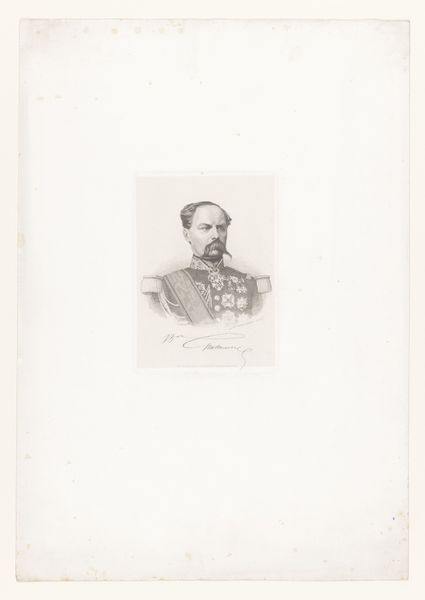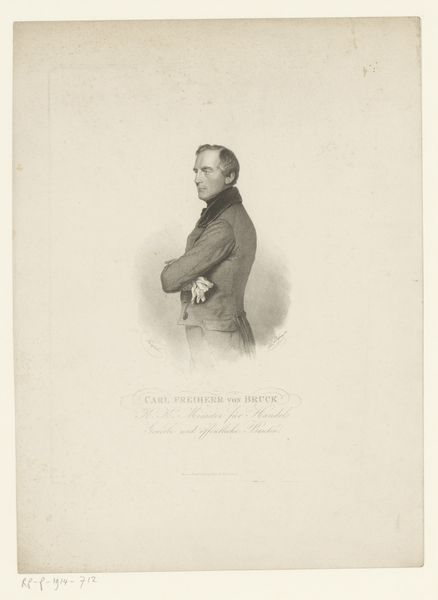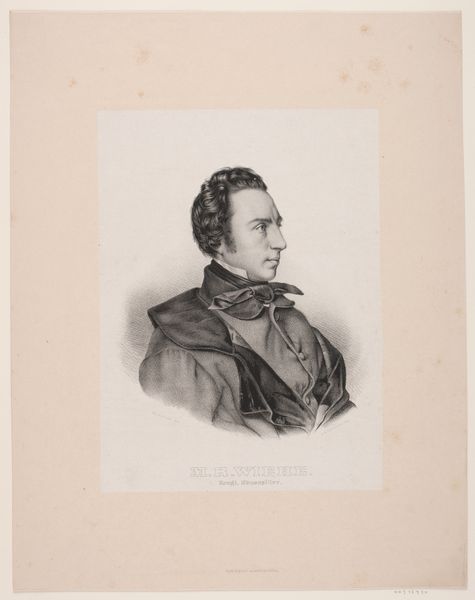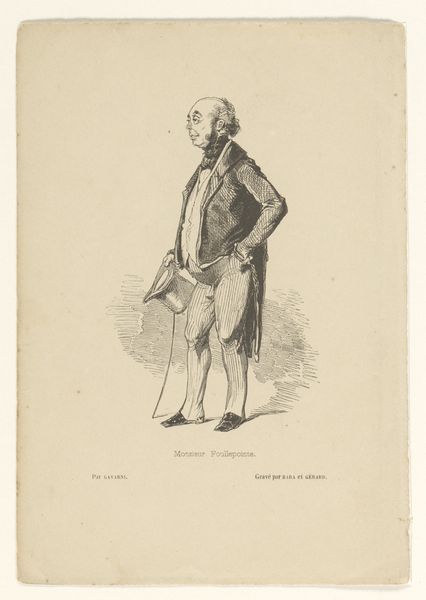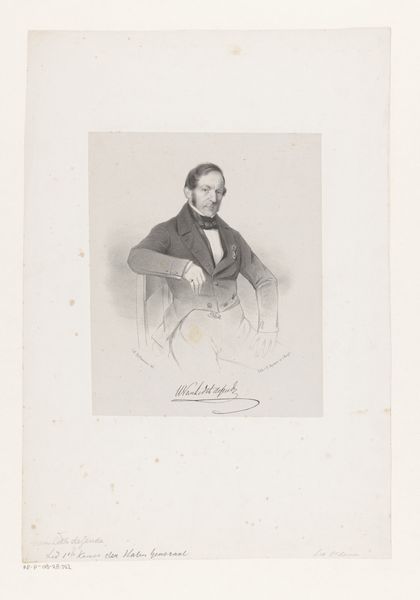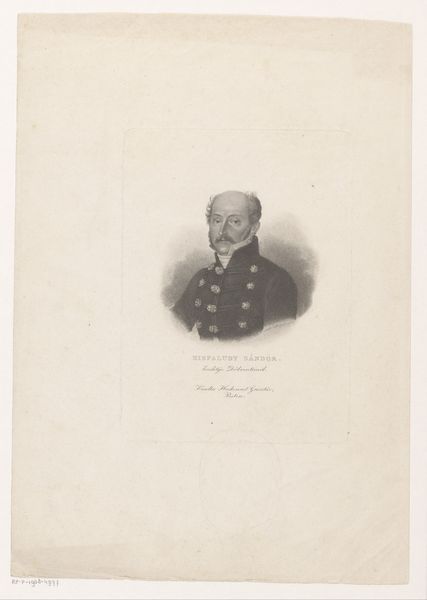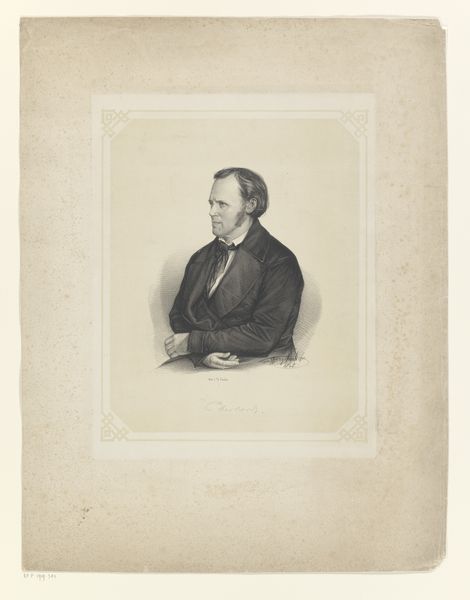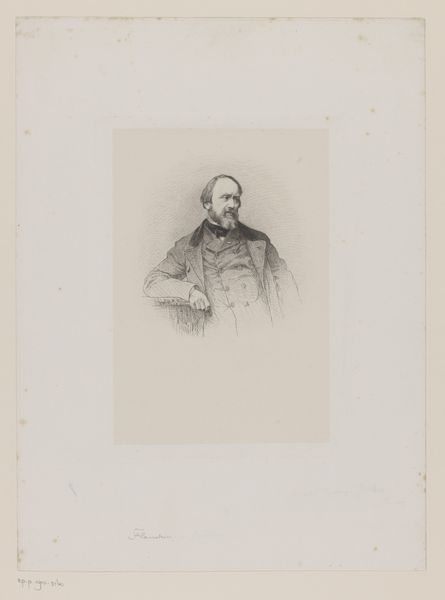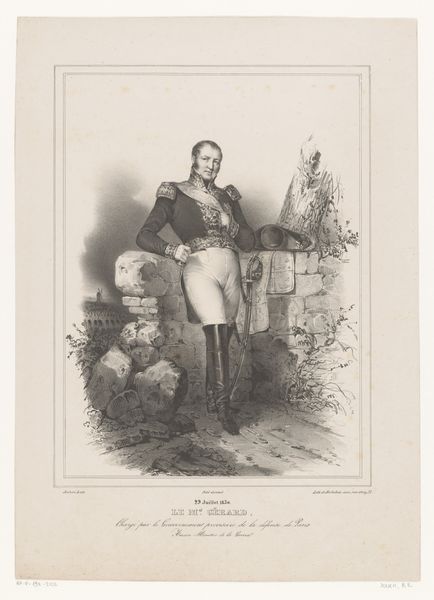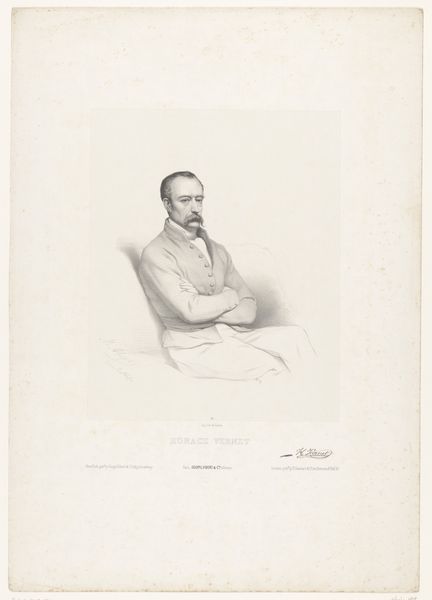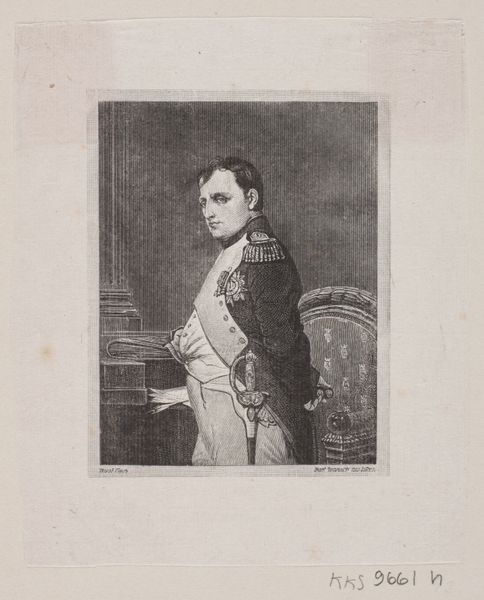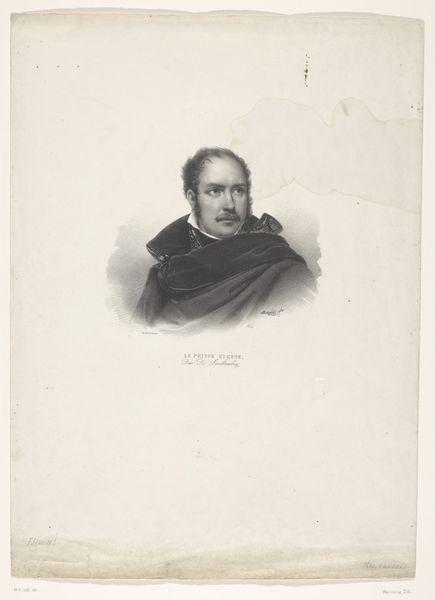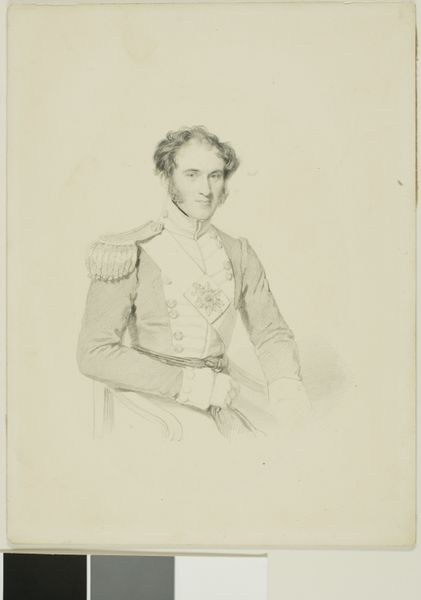
drawing, pencil
#
portrait
#
pencil drawn
#
drawing
#
neoclacissism
#
16_19th-century
#
pencil sketch
#
pencil drawing
#
pencil
#
portrait drawing
#
academic-art
#
realism
Dimensions: height 430 mm, width 350 mm
Copyright: Rijks Museum: Open Domain
Henri Philippe Heidemans created this portrait of Evert Ludolf van Heeckeren van Waliën using lithography, a printmaking technique. Lithography relies on the contrast between greasy and water-receptive areas on a flat stone or metal plate. The artist draws on the surface with a greasy crayon, then treats the stone so that ink adheres only to the drawn areas. This process allows for very detailed and tonal images, as you can see in the intricate rendering of van Heeckeren’s uniform. Lithography emerged in the 19th century as a relatively inexpensive method for mass-producing images. This had a democratizing effect, making portraits and other artworks accessible to a broader public, beyond the wealthy elite who could afford painted portraits. While the sitter may have been an elite individual, this portrait also exists thanks to the rise of industrial capitalism and new printmaking technologies. So, next time you look at a print, consider not only the image itself, but also the material and social conditions that made its creation possible.
Comments
No comments
Be the first to comment and join the conversation on the ultimate creative platform.
